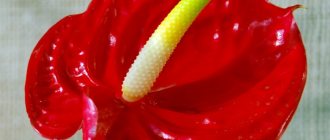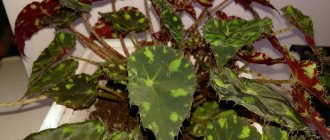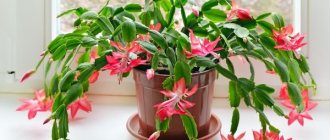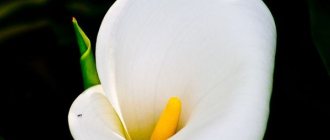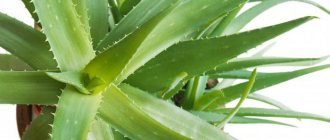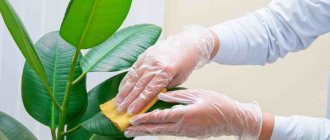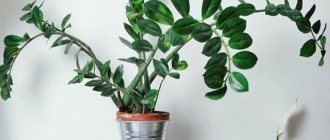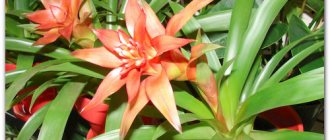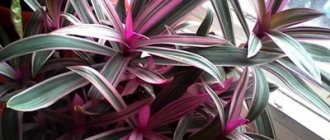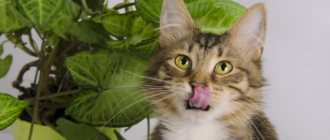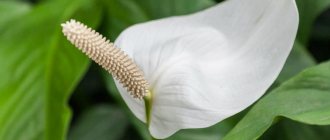What signs and superstitions are there related to male happiness?
It is believed that anthurium is able to resolve and smooth out conflict situations. Gifted to an unmarried girl/unmarried guy, it will help you find a worthy spouse in the near future. When a man and a woman live together, the magic of “male happiness” will be enhanced by spathiphyllum.
Anthurium flowering is a good sign indicating an improvement in your financial situation. Long flowering with large inflorescences promises the owners a stable increase in money. Pay attention to the inflorescences and receptacle: if they are irregular in shape and have uneven edges, then, unfortunately, this is a sign of impending financial losses.
The meaning of the flower “Male Happiness” for women
Despite its name, anthurium can have a good effect on the fairer sex.
“Male happiness” will help improve your financial condition and have a positive effect on attractiveness and relationships with the opposite sex if there have been troubles in love.
It is also believed that careful and caring care of the plant will give the girl love from her soul mate.
How can it be dangerous?
This question is asked by everyone who decides to buy anthurium. The leaves of the flower contain a certain proportion of toxic substances; on their surface there are calcium oxide crystals that can cause irritation, especially on mucous surfaces. But this is not a threat to adults - it is enough to wear gloves when working with anthurium.
Those who are sensitive to odors should choose a type of anthurium that does not smell.
The roots can also cause allergies. However, anthurium has never seriously harmed anyone, so the danger should not be exaggerated. But this plant has many advantages:
- it absorbs exhaust gases and plastic emissions;
- the tropical origin of the plant forces us to take care of sufficient air humidity around it, which has a positive effect on the health of the owners;
- If necessary, you can make an excellent bouquet from anthurium flowers. They are great for cutting and last quite a long time in water.
What does the anthurium flower bring to men?
Many years of experience suggest that the name of anthurium “Male Happiness” is justified! It is believed that the flower can solve many problems associated with a man’s sex life:
- accelerates recovery;
- restores and maintains men's health;
- has a positive effect on personal life in general.
In addition, anthurium will help get rid of various kinds of addictions (be it gluttony, addiction to alcohol or nicotine).
If you think you have lost your way, he will guide you on the right path in life. There is also a sign that it is useful to keep anthurium at home for representatives of the stronger sex, who often have to communicate with many people at work: it will restore mental health, maintain a good mood, and also give strength for the successful implementation of assigned tasks.
What is the meaning of a flower in Feng Shui?
Following the teachings of Feng Shui allows a person to find favorable energy flows for himself and use them to his advantage.
In addition to the fact that anthurium itself is a carrier of positive energy, according to Feng Shui it has many other interesting properties. According to Feng Shui, the red color of indoor plants carries the energy of wealth and prosperity.
This effect is enhanced by the combination of red and yellow, which is the inflorescence and receptacle. Thus, anthurium is able to attract money and financial well-being to the home.
Feng Shui also says that “male happiness” can sharpen your intuition, help resolve doubts, cope with fears and improve concentration when solving issues in the work area. Of course, there is also a place where, according to Feng Shui, it would be good to keep anthurium: the eastern part of the house will enhance the energy of anthurium.
Humidity
Anthurium needs high humidity, which is not available in our area, so it should be sprayed 1-2 times a day. It will be useful to use special air humidifiers. But in winter, you rarely need to spray the “masculine principle”, otherwise it will have problems.
To retain moisture near the roots, it is advisable to cover the plant with moss. It will provide the flower with more active growth and development.
Signs and superstitions about male happiness depending on the flower
Be attentive to how the plant feels in your home. The condition of the flower can tell you what to expect in the near future.
Male happiness does not bloom, what does this mean in omens?
If “male happiness” does not bloom at home, then this is a bad omen. A bad atmosphere in the house, negative people, a man’s weak character, lack of influence - all this leads to the fact that anthurium does not please you with lush flowering.
Anthurium blooms profusely
Abundant flowering of anthurium is certainly a good sign. During the flowering period, the positive influence of a flower on your life reaches its maximum. Peace and tranquility will reign in the family, people will feel good. A man in particular will experience a surge of strength and health.
Male happiness began to cry
If you notice the formation of small drops of dew on the leaves of anthurium, then your flower is “crying”. What does it mean?
Unfortunately, this is a bad omen. Be careful, because there is a superstition among people that such a sign promises deterioration in the financial sphere of life, as well as health problems for younger family members. The longer the flower “cries”, the longer the bad streak will last.
REFERENCE! In fact, the phenomenon of “crying” can be explained as follows: the release of moisture by a flower means that there is too much of it in the surrounding air or in the soil. Therefore, there is a superstition that if the anthurium begins to “cry”, rainy weather can be expected.
The flower of male happiness disappears
“Male happiness” is a flower that is especially sensitive to the situation in the house, the atmosphere, and the aura of the owners.
It is believed that bad people cannot keep the plant at home for a long time, since it does not get along with them.
If “male happiness” disappears in the house, then think about it, you could change for the better, work on your character flaws. Believe me, this will have a good effect not only on the condition of the flower, but also on you and your loved ones.
As one might guess, missing anthurium in the house will not lead to anything good: popular superstition says that your family is threatened by failures and troubles.
Pollination
In order for fertilization to occur, pollen must land on the stigma.
The process of transferring pollen from the stamens to the stigma of the pistil is called pollination. There are two main types of pollination: self-pollination and cross-pollination.
Self-pollination
In self-pollination, pollen from the stamen ends up on the stigma of the same flower. This is how wheat, rice, oats, barley, peas, beans, and cotton are pollinated. Self-pollination in plants most often occurs in a flower that has not yet opened, that is, in a bud; when the flower opens, it is already finished.
During self-pollination, sex cells formed on the same plant and, therefore, having the same hereditary characteristics merge. This is why the offspring produced by the process of self-pollination are very similar to the parent plant.
Cross pollination
During cross-pollination, a recombination of hereditary characteristics of the paternal and maternal organisms occurs, and the resulting offspring can acquire new properties that the parents did not have. Such offspring are more viable. In nature, cross-pollination occurs much more often than self-pollination.
Cross-pollination is carried out with the help of various external factors.
Anemophily (wind pollination). In anemophilous plants, the flowers are small, often collected in inflorescences, a lot of pollen is produced, it is dry, small, and when the anther opens, it is thrown out with force. Light pollen from these plants can be carried by the wind over distances of up to several hundred kilometers.
The anthers are located on long thin filaments. The stigmas of the pistil are wide or long, feathery and protrude from the flowers. Anemophily is characteristic of almost all grasses and sedges.
Entomophily (transfer of pollen by insects). Adaptations of plants to entomophily are the smell, color and size of flowers, sticky pollen with outgrowths. Most flowers are bisexual, but the maturation of pollen and pistils does not occur simultaneously, or the height of the stigmas is greater or less than the height of the anthers, which serves as protection against self-pollination.
The flowers of insect-pollinated plants have areas that secrete a sweet, aromatic solution. These areas are called nectaries. Nectaries can be located in different places of the flower and have different shapes. Insects, having flown up to a flower, are drawn to the nectaries and anthers and become dirty with pollen during their meal. When an insect moves to another flower, the pollen grains it carries stick to the stigmas.
When pollinated by insects, less pollen is wasted, and therefore the plant conserves nutrients by producing less pollen. Pollen grains do not need to stay in the air for long and can therefore be heavy.
Insects can pollinate sparsely located flowers and flowers in windless places - in the thicket of a forest or in thick grass.
Typically, each plant species is pollinated by several types of insects, and each type of pollinating insect serves several plant species. But there are types of plants whose flowers are pollinated by insects of only one species. In such cases, the mutual correspondence between the lifestyles and structure of flowers and insects is so complete that it seems miraculous.
Ornithophily (pollination by birds). Characteristic of some tropical plants with brightly colored flowers, abundant nectar secretions, and a strong elastic structure.
Hydrophily (pollination by water). Observed in aquatic plants. The pollen and stigma of these plants most often have a thread-like shape.
Bestiality (pollination with the help of animals). These plants are characterized by large flower sizes, abundant secretion of nectar containing mucus, massive production of pollen, and, when pollinated by bats, flowering at night.
Why do men dream about happiness?
The general interpretation of dreams in which anthurium is seen is as follows: such a dream means that in life you are connected with the partner of your friend, girlfriend, or simply envy their romantic relationships and feelings.
If a woman sees an anthurium in a dream, it means that she is full of hopes for personal happiness; for a man, such a dream promises a meeting with a beautiful girl.
But, as with many other phenomena and objects, what is important is how exactly you interacted with the anthurium in a dream, how you saw the flower in a dream:
- smelling flowers in a dream means consolation and tranquility, you will be helped;
- see in winter - to interference in life;
- giving to someone or giving a flower in a dream - to parting, separation;
- flowers in pots - to unexpected purchases;
- a white flower is dreamed of for a wedding; it is possible to open a new business.
Fertilization
The pollen grain lands on the stigma of the pistil and is attached to it due to the structural features of the shell, as well as the sticky sugary secretions of the stigma to which the pollen sticks.
The pollen grain swells and germinates, turning into a long, very thin pollen tube. The pollen tube is formed as a result of division of a vegetative cell. First, this tube grows between the cells of the stigma, then the style, and finally grows into the cavity of the ovary. The generative cell of the pollen grain moves into the pollen tube, divides and forms two male gametes (sperm). When the pollen tube penetrates the embryo sac through the pollen duct, one of the sperm fuses with the egg. Fertilization occurs and a zygote is formed.
The second sperm fuses with the nucleus by the large central cell of the embryo sac. Thus, in flowering plants, during fertilization, two fusions occur: the first sperm fuses with the egg, the second with the large central cell. This process was discovered in 1898 by the Russian botanist, academician S.G. Navashin and called it double fertilization. Double fertilization is characteristic only of flowering plants.
The zygote formed by the fusion of gametes is divided into two cells. Each of the resulting cells divides again, etc. As a result of repeated cell divisions, a multicellular embryo of a new plant develops.
The central cell also divides, forming endosperm cells in which nutrient reserves accumulate. They are necessary for the nutrition and development of the embryo. The seed coat develops from the integument of the ovule. After fertilization, a seed develops from the ovule, consisting of a peel, an embryo and a supply of nutrients.
After fertilization, nutrients flow to the ovary, and it gradually turns into a ripe fruit. The pericarp, which protects the seeds from adverse influences, develops from the walls of the ovary. In some plants, other parts of the flower also take part in the formation of the fruit.
Education dispute
Simultaneously with the formation of pollen in the stamens, the formation of a large diploid cell occurs in the ovule. This cell divides meiotically and gives rise to four haploid spores, which are called macrospores because they are larger in size than microspores.
Of the four macrospores formed, three die, and the fourth begins to grow and gradually turns into an embryo sac.
Formation of the embryo sac
As a result of threefold mitotic division of the nucleus, eight nuclei are formed in the cavity of the embryo sac, which are covered with cytoplasm. Cells deprived of membranes are formed, which are arranged in a certain order. At one pole of the embryo sac, an egg apparatus is formed, consisting of an egg and two auxiliary cells. At the opposite pole there are three cells (antipodes). One nucleus migrates from each pole to the center of the embryo sac (polar nuclei). Sometimes the polar nuclei fuse to form the diploid central nucleus of the embryo sac. The embryo sac in which nuclear differentiation has occurred is considered mature and can receive sperm.
By the time the pollen and embryo sac mature, the flower opens.
Structure of the ovule
Ovules develop on the inner sides of the walls of the ovary and, like all parts of the plant, consist of cells. The number of ovules in the ovaries of different plants varies. In wheat, barley, rye, and cherry, the ovary contains only one ovule, in cotton - several dozen, and in poppy, their number reaches several thousand.
Each ovule is covered with a covering. At the top of the ovule there is a narrow canal - the pollen passage. It leads to the tissue that occupies the central part of the ovule. In this tissue, as a result of cell division, an embryo sac is formed. Opposite the pollen opening there is an egg cell, and the central part is occupied by a large central cell.
Development of angiosperms (flowering) plants
Formation of seed and fruit
When the seed and fruit are formed, one of the sperm fuses with the egg, forming a diploid zygote. Subsequently, the zygote divides many times, and as a result, a multicellular plant embryo develops. The central cell, fused with the second sperm, also divides many times, but the second embryo does not arise. A special tissue is formed - endosperm. The endosperm cells accumulate reserves of nutrients necessary for the development of the embryo. The integument of the ovule grows and turns into a seed coat.
Thus, as a result of double fertilization, a seed is formed, which consists of an embryo, storage tissue (endosperm) and a seed coat. The wall of the ovary forms the wall of the fruit, called the pericarp.
Where is the best place to put an anthurium flower?
The effect a flower has on others determines where it is preferable to keep the plant in the house, and what flowers it may not be compatible with.
Is it possible to place anthurium and spathiphyllum together?
When deciding on the joint placement of anthurium and spathiphyllum, keep in mind the preferred light regime for each plant: anthurium is light-loving.
While spotiphyllum prefers dark places. Therefore, it will be difficult to find a place where both flowers can be kept at once. If we talk about the energy of plants, they calmly coexist together without suppressing each other.
INTERESTING! If the bright red anthurium is usually called “male happiness,” then the delicate white spathiphyllum is often called “female happiness.”
Is it possible to place anthurium in the bedroom?
When choosing a place for “male happiness,” many people advise giving preference to the bedroom or living room. But unmarried women need to be careful about this: placing anthurium in the bedroom can attract confusion in relationships with the opposite sex. For married women, on the contrary, it will bring good changes: the husband will spend time with his family more often.
Wax American
There are many wild anthurium species that are found in Central and South America from Mexico to Uruguay. They differ in height, shape and size of leaves, but their flowers are the same shade - bright red. In home floriculture, 2 varieties of anthurium are more common:
- Andre (Anthurium andreanum).
- Scherzer (Anthurium scherzerianum).
Color varies from snow-white to purple. Breeders have bred hybrids with unusual leaf shapes and patterns.
The leaves of the flower look like a heart: a smooth, round plate over 30 cm long with a sharp tip. They are no less decorative than flowers; they come in matte or glossy, in various shades of green.
Who shouldn't have a flower for male happiness?
Despite such a beneficial effect on various areas of life and ease of care, “male happiness” is still not suitable for every person.
The fact is that anthurium is a tropical flower, therefore, like many tropical flora, it is characterized by the presence of protective mechanisms. In addition to a possible allergy to the pollen of the flower, it is dangerous due to its slightly toxic juice: its contact with mucous membranes or skin will lead to swelling, burning and irritation.
You should not start an anthurium if there are small children, animals in the house, or you are prone to allergic reactions.
How to plant
Anthurium is usually sold as an adult. Seeds are very difficult to find, so planting most often occurs using cuttings cut from the mother bushes. How to grow “masculinity”?
- Cut off a young shoot 6-8 cm long from an adult plant. Make sure it has leaves and a growing point.
- Dry the resulting cutting in the wind.
- For planting, it is best to take not water, but a mixture of sand, moss and peat.
- After planting the cuttings in the substrate, cover it with a lid or bag to simulate a greenhouse.
- Typically, the plant takes root after 18-20 days. At this time, it can already be transplanted to a permanent “place of residence”.
Anthurium grown in this way turns out to be completely healthy, strong and completely takes on all the features of the mother bush. Planting is best done in the spring.
Answers to frequently asked questions
Why do anthurium leaves curl?
The cause may be a draft, direct undispersed lighting or dry air, because “male happiness” loves a humid climate.
For anthurium to have a beneficial effect on life, does it have to be red?
No, all anthuriums (pink, red, blue) will “serve” equally well if you take care of their health.
Is it possible to place anthurium in the corridor?
There is a superstition that “male happiness” in the corridor will somehow protect the house from unwanted guests: a person who comes into the house with bad intentions will feel bad.
